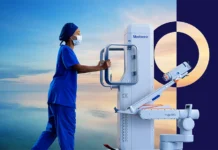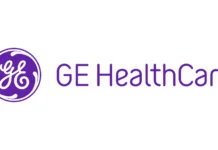New data presented here at the 2010 American Urological Association (AUA) Annual Meeting show that high-intensity focused ultrasound (HIFU) as primary therapy for prostate cancer can produce outcomes equal to external beam radiation therapy.
A series of 880 consecutive patients showed steadily improving results as HIFU technology improves, according to Sebastien Crouzet, MD, Edouard Herriot Hospital, University of Lyon, Lyon, France.
"We have followed some patients as long as 10 years and are reaching results very similar to EBRT, Dr. Crouzet told Doctor’s Guide on June 2. "The main issue is that you can repeat HIFU if you see evidence of disease. And if the disease continues to progress, you can add salvage radiation therapy to achieve very good control. Unlike many treatments, HIFU does not represent a therapeutic impasse."
Starting in 1997, all patients with prostate cancer with localised disease who received whole gland ablation and at least 1 year of follow-up were included in the study cohort.
Follow-up included serial prostate specific antigen (PSA) measurements and systematic control biopsies at 6 months. Patients with a rising PSA were given additional biopsies. If there was any evidence of recurring prostate cancer after the initial HIFU treatment, patients were offered additional treatments and a repeat biopsy. Patients with a positive biopsy after follow-up HIFU were offered either external beam radiation therapy or hormonal deprivation.
A total of 880 patients were included in the study. The mean age was 70 years and the mean PSA at first HIFU treatment was 8.4. Of the group, 36% had low-risk disease, 48% had intermediate-risk disease, and 16% had high-risk disease. Gleason scores were 6 in 58% of men, 7 in 34%, and >=8 in 8%. Patients received a mean of 1.4 HIFU treatments. The mean PSA nadir was 0.45 and 69% of patients reached <=0.3. The mean follow-up period was 41 months.
The overall 7-year survival rate was 90% and the 7-year cancer-specific survival rate was 98%. Fully 96% of patients were free of metastases 7 years after HIFU. The 5-year biochemical survival rate was 75%, 59%, and 45% for low-, intermediate-, and high-risk patients. The 7-year biochemical survival rate was 62%, 50%, and 39% for low-, intermediate-, and high-risk patients (P = .0001).
A total of 239 patients had biopsy-proven local relapse after a second HIFU treatment. Of this group, 156 patients had salvage EBRT and 83 patients had androgen deprivation therapy.
"Disease control and survival rates with HIFU are very encouraging," Dr. Crouzet said. "You also have the advantage that HIFU is very minimally invasive. You don’t touch the nerve or the sphincter, therefore you avoid the side effects of more invasive treatment."

















